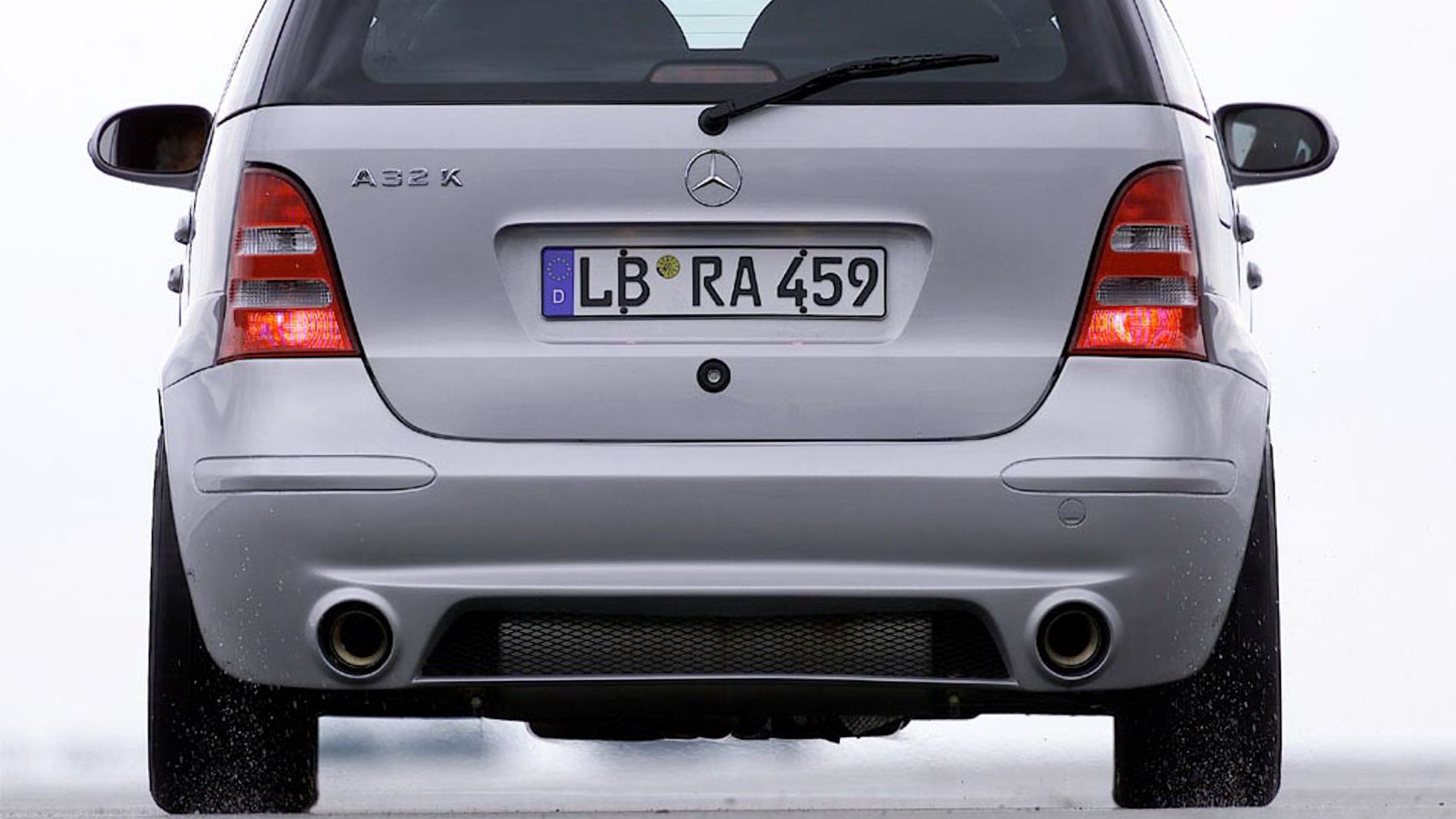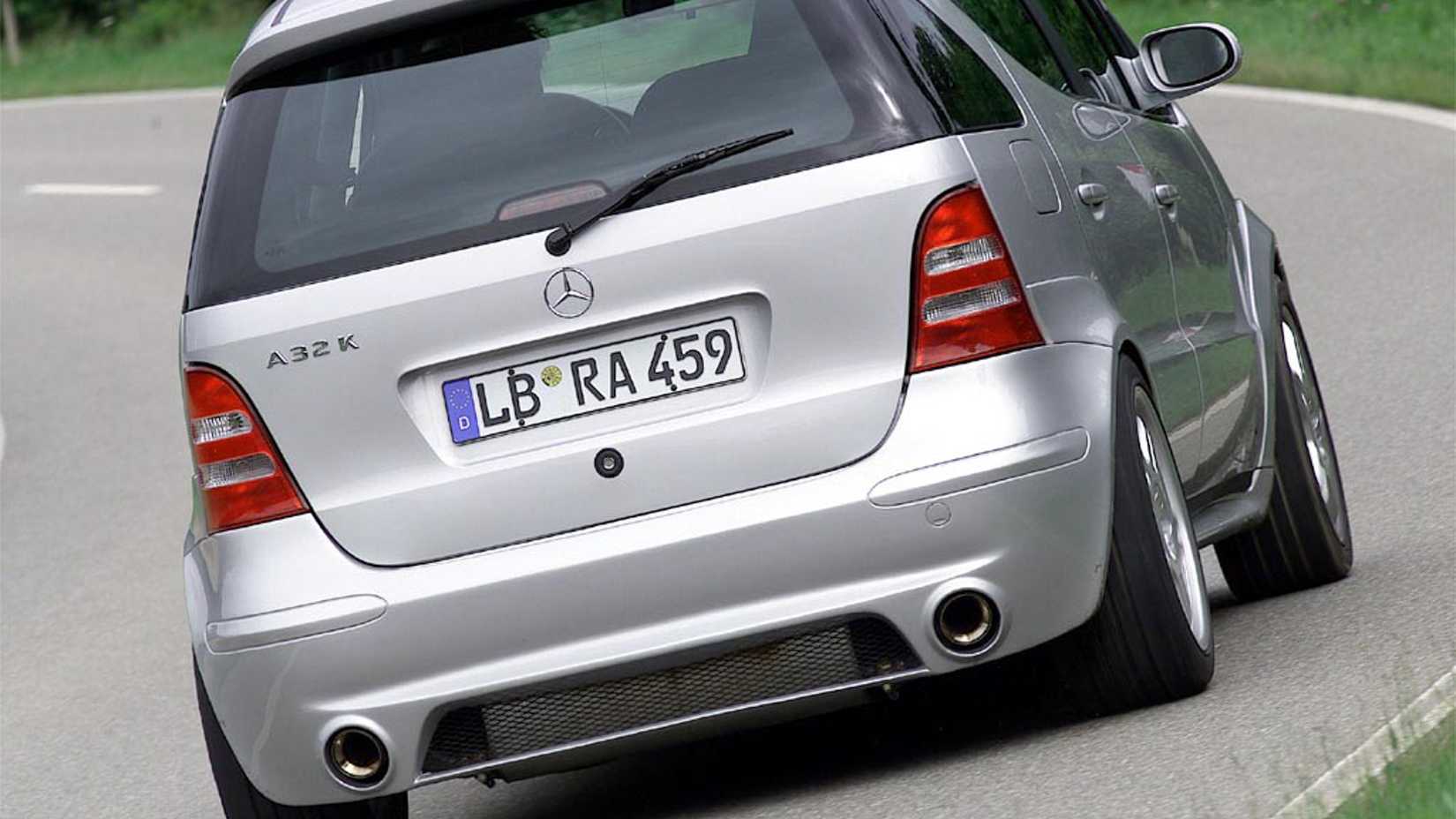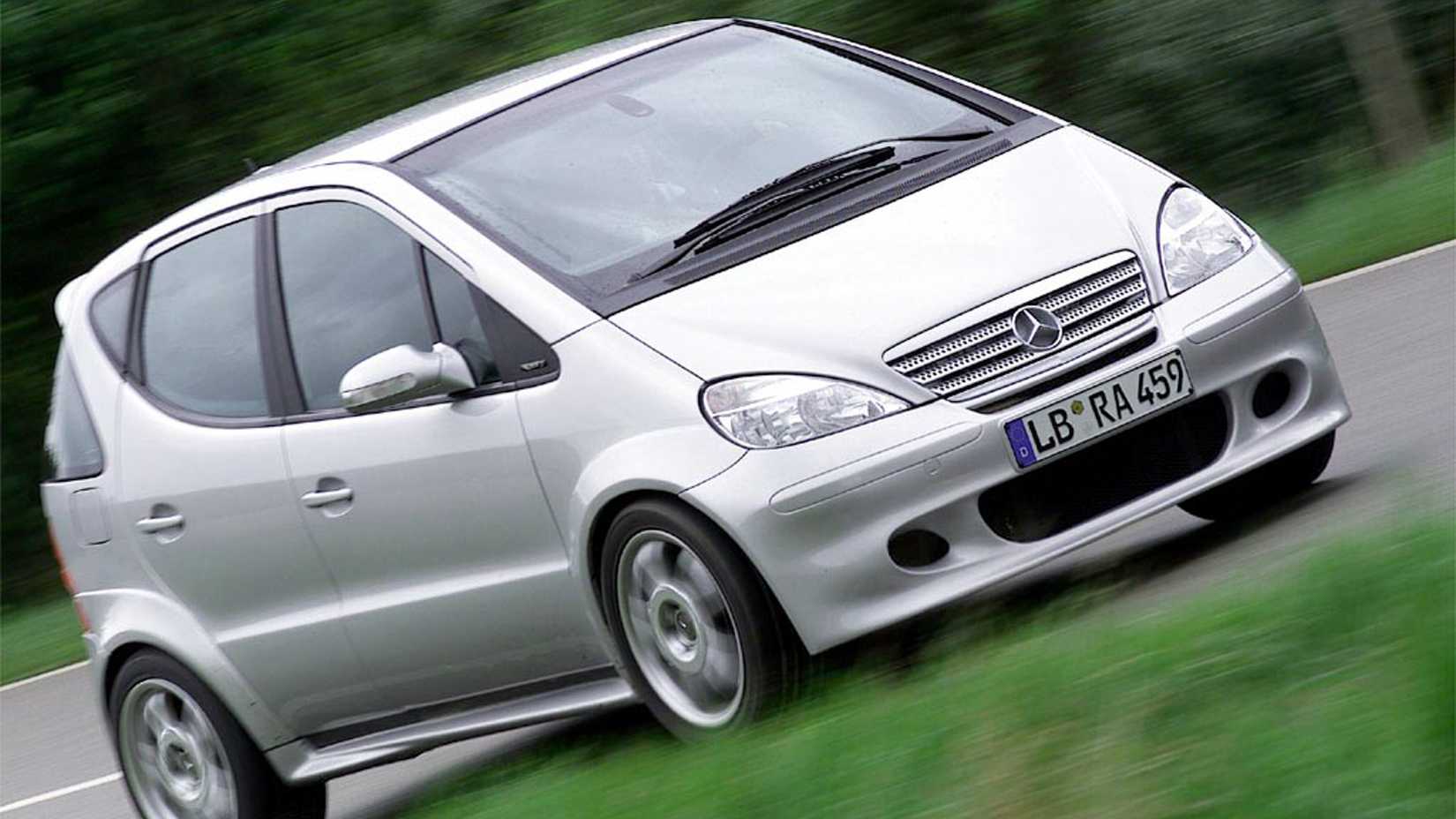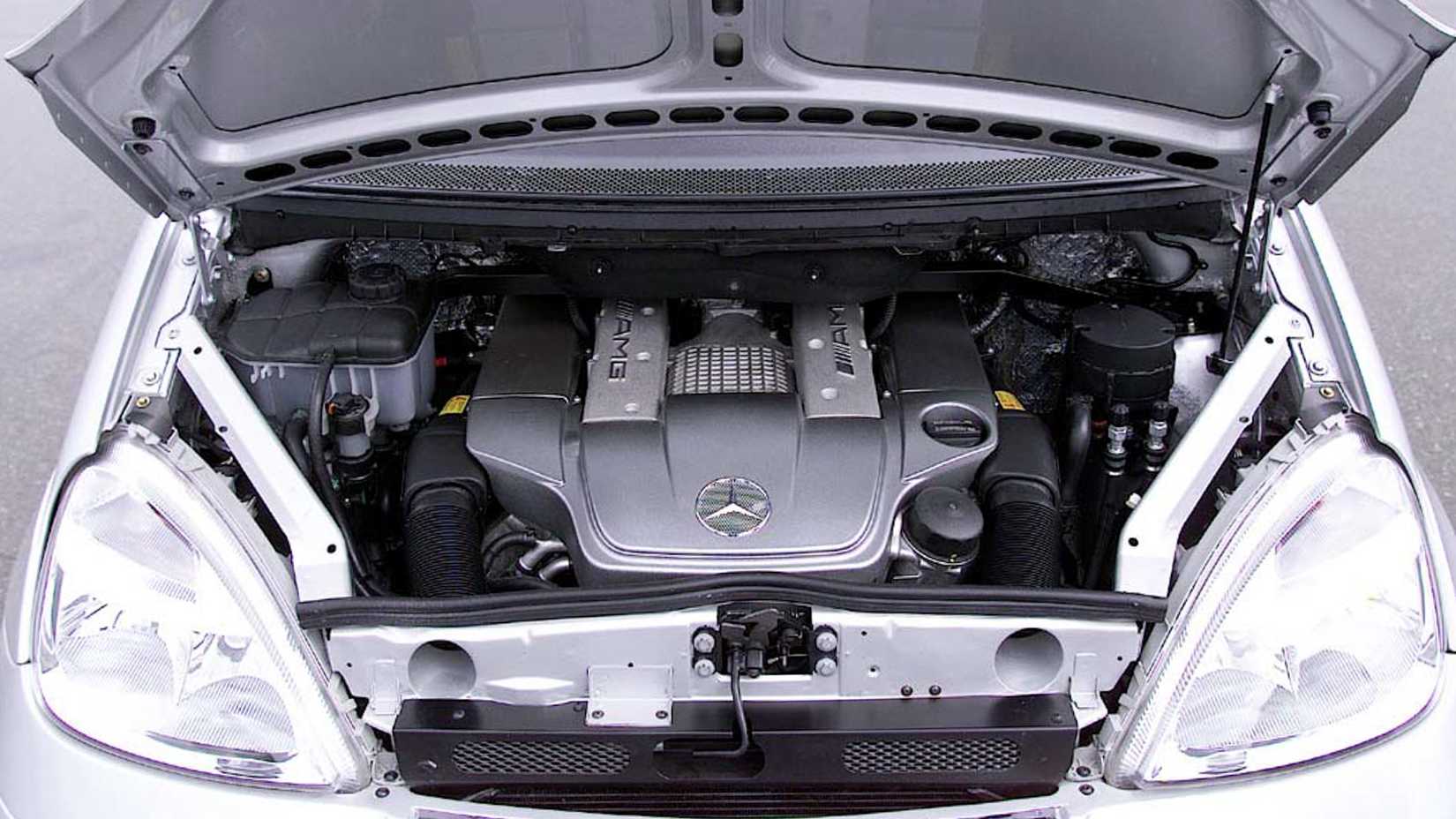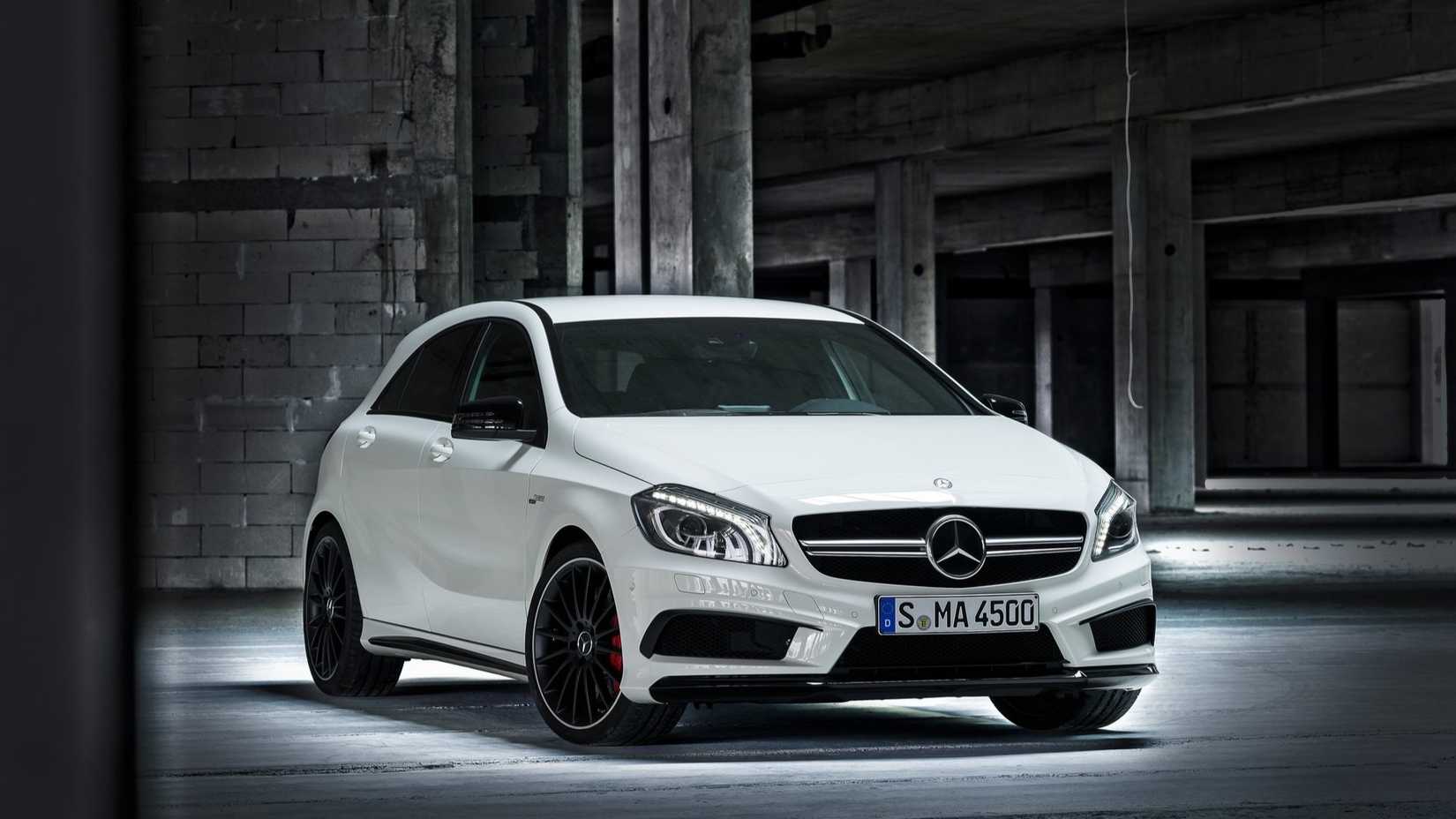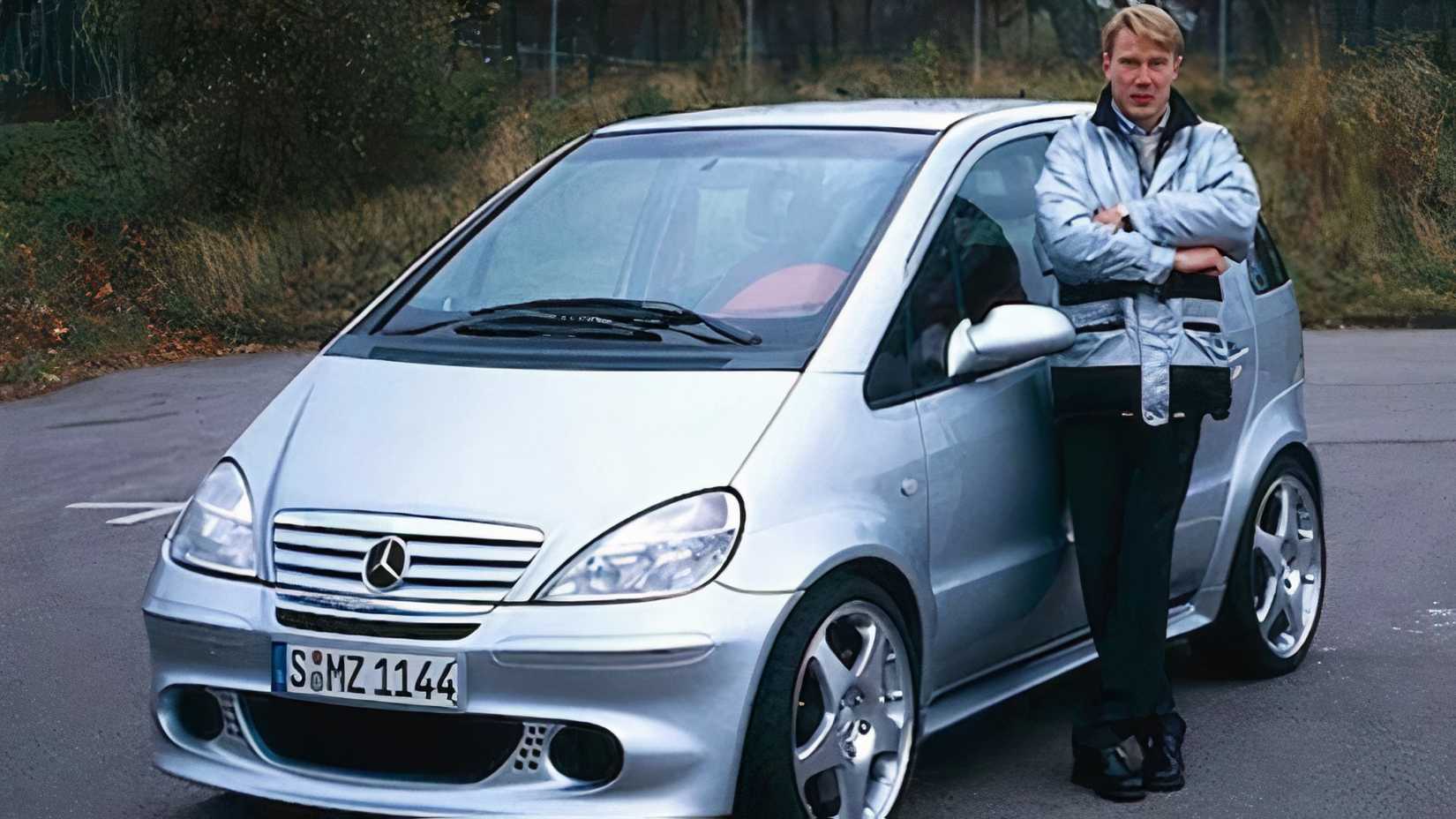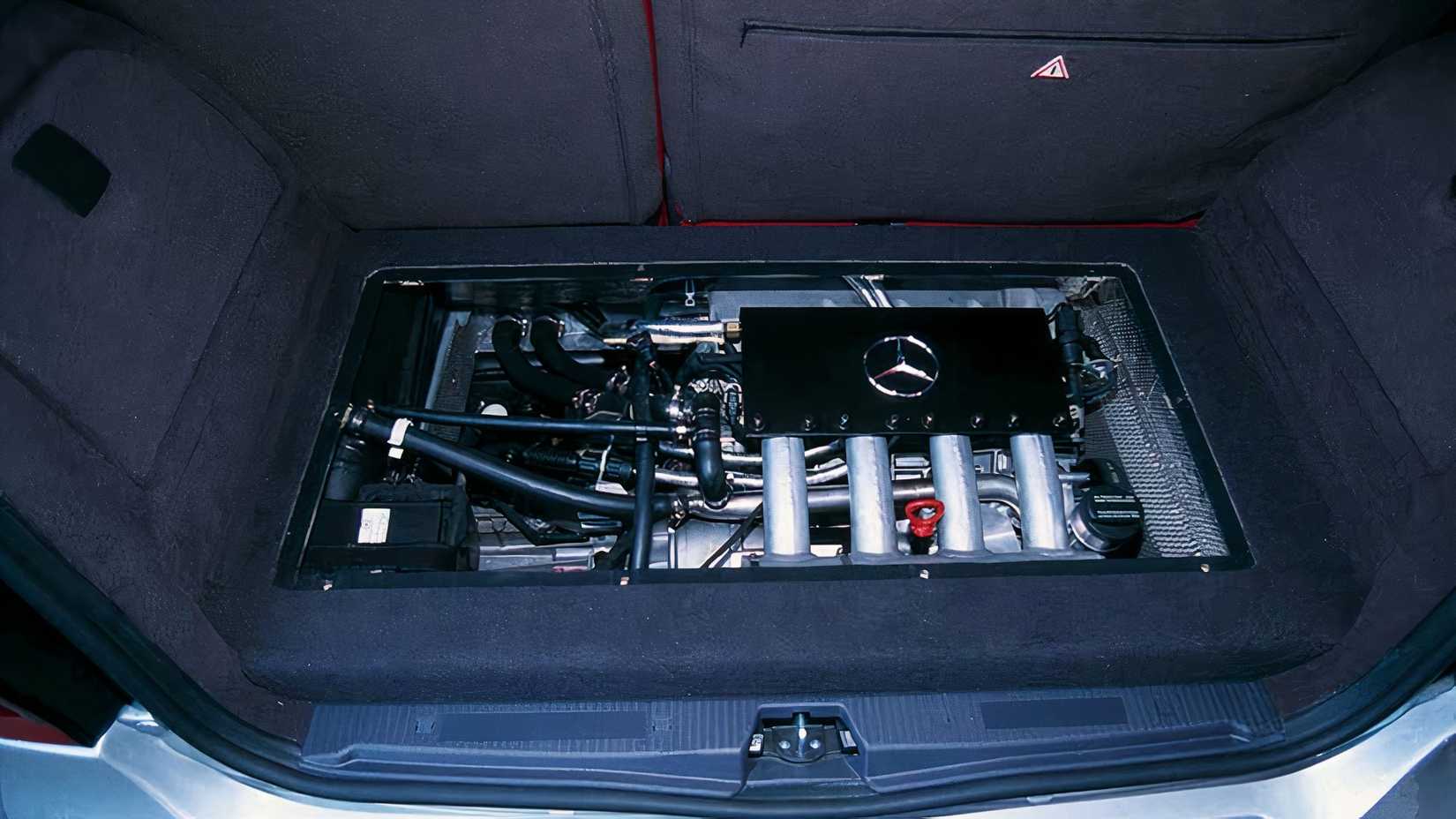By the late 1990s, city cars were exploding in popularity, and Mercedes-Benz was ready to get in on the action. The company had enjoyed success in its luxury class for decades with low-volume, high-margin products that were renowned the world over for their comfort, performance, and design. But there’s always more money to be made, and the turning point came in 1997 when the company introduced its smallest car yet: the A-Class.
This compact city car combined the brand’s iconic design with some uncommon engineering that improved safety and increased occupant space despite its diminutive size. Initial reception was excellent, and many at the company were eager to see how far the front-wheel drive platform could be pushed. Despite the packaging constraints, a skunkworks team quietly turned the city car into a nearly 400-horsepower hot hatch the likes of which the world had never seen, yet despite its potential, Mercedes never put it into production. This is the story of the supercharged Mercedes hot hatch that never was.
A Hidden Hot Hatch Experiment
The early 2000s hot hatch scene was competitive but far from the nuclear horsepower wars we see today. Volkswagen’s Golf R32 was considered outrageous at 240 horsepower and AWD. Ford’s first Focus RS and Honda’s Civic Type R were legends in their own right, but none came close to breaking the 300 hp mark, let alone touching 400. Maybe it was because the engineering just wasn’t there, or maybe it was because automakers didn’t think there was a market for small cars with even more power, but, whatever the reason, Mercedes was ready to take a bold chance.
The A-Class was a bold step for the brand into the small-car market. The goal of the model was urban efficiency and packaging above all else, so it was paired with quite a few tiny gas and diesel engines over the years. The car offered a tall, upright stance, giving the cabin a roomier feel that was elevated (literally) by its relatively high floor. This allowed the car to be engineered to push the engine underneath the occupants in the case of a head-on collision.
A smart approach, but the entire formula had the unintended effect of increasing the car’s center of gravity, something that led to it infamously failing the Moose Test in its first month on sale. Mercedes quickly addressed the issue by altering the car’s stability control and modifying the suspension, but it further emphasized to enthusiasts that this was a cautious, safety-first city car above all else.
AMG, however, had other ideas. The previously independent tuning firm found itself a majority-owned subsidiary of Mercedes-Benz by the end of 1998, and its previous founder, Hans Werner Aufrecht, then headed up a new division called HWA AG, which took up control of the AMG racing teams and the company’s customized vehicle construction business. It was made by the same people who had previously made the CLK GTR racecar, so they knew how to create a monster.
The story goes that, towards the end of the first-generation A-Class’s life, a wealthy individual approached the group and asked them if they’d create a high-performance version of the tiny car to create an unassuming supercar. Of course, the team was enthralled by the idea and used the C32 and SLK32 AMG for inspiration. The overhaul was extensive, and the result was a machine as wild as it sounded, ready to embarrass more focused and expensive sports cars.
Looks and Specs That Shamed Supercars
Supposedly, the initial thought was to shoehorn a V8 under the tiny hood of the car, as this is Mercedes-Benz we’re talking about, but the engineers quickly found that to be an impossibility. Instead, they settled on the 3.2-liter supercharged V6, but tuned it to produce 375 horsepower and 332 lb-ft of torque with a 6,200 RPM redline. Not bad in a vehicle that originally had a curb weight of around 2,200 lbs.
To handle this newfound power, the car was given a five-speed AMG-turned automatic transmission, and power was sent to all four wheels courtesy of a bespoke 4MATIC AWD system. The brakes and suspension were upgraded, and the new AMG five-spoke wheels were shod in Pirelli PZero Rosso rubber. The result was a car that could supposedly hit 60 mph in less than 5 seconds, and had a top speed of around 170 mph, though we’d be terrified of trying that speed in something that looks like it could be blown over by a crosswind.
|
Engine |
3.2-liter supercharged V6 |
|---|---|
|
Horsepower |
375 hp |
|
Torque |
332 lb-ft |
|
Drivetrain |
4MATIC AWD |
|
Transmission |
5-speed AMG-tuned automatic |
|
0-60 mph |
Under 5 seconds |
|
Top Speed |
~170 mph |
However, the performance was only one-half of the equation; the other was the looks. The first-gen A-Class was always a decent-looking car, and Autocar even named its designer their “Designer of the Year” for his effort, but it still needed a makeover to match its aggression. It was given a body kit, with a more aggressive front and rear fascia and sideskirts, plus dual exhaust tips and a subtle spoiler. It had a wider stance, which helped to fit the new wheels and rubber, and on the inside, it received AMG seats, an AMG steering wheel, new white gauges, and aluminum pedals. Still, it wasn’t showy, and walking by it on the street, you probably wouldn’t give it another look, but it was no ordinary commuter, and it helped to set the stage for the other compact AMG models to follow.
A Forgotten Link in AMG’s Evolution
Besides this singular example in 2002, it isn’t believed that any more A32K models were made. However, it was an important turning point for the company, as it signified that no model was off-limits for serious performance enhancement. If its performance formula could be applied to a car this small and unconventional, then all the other tiny cars in the range could get the treatment, and many did over the following decades beyond its coupes and sedans.
- C 32 AMG Sports Coupé – A practically unknown supercharged V6-powered compact coupe that could only be specially ordered through the AMG-Studio department, likely by the same people who made the A32K.
- A45 AMG / A45 S – We saw the A Class rejoin the hot-hatch segment in its third generation with turbocharged 4-cylinder performance, AWD, and, before it was discontinued, over 400 horsepower.
- CLA45 AMG / CLA45 S – Four-door coupe counterpart to the A45, sharing its engine and drivetrain, and the model we’re more used to.
- GLA45 AMG / GLA45 S – Essentially a lifted A45, the GLA45 is the closest we’ve ever gotten to a true AMG hot hatch in the US.
- GLB35 AMG – Slightly larger than the GLA, but still a compact performance SUV with some attitude.
It was almost like the A32K was a proof of concept for the company, a vehicle it wasn’t fully committed to until it saw its potential by the time the 2010s hit. The A45 that arrived in 2013 saw the brand jump in headfirst, but we can’t help but feel the A32K would have also dominated the segment in the early 2000s, and likely would have given it a headstart that could have shaken things out differently.
It Somehow Wasn’t The Craziest A-Class
However, the first-gen A-Class hot hatch story only ends here. The beginning actually happened a few years prior, and this story is much more outrageous than the one we just outlined. For this one, we need to go back to 1999. The company recently helped McLaren nab the F1 Constructors’ Championship in 1998, with driver Mika Häkkinen claiming the Driver’s Championship. Mercedes supplied the powerplants, and to celebrate, planned the creation of a special hot hatch just for him and his co-driver.
The easy approach would have been the one above, but for some reason, that wasn’t good enough at the time. Instead, the company took the 1.9-liter inline-four already found in the A190 and doubled it, fitting one in the front and another in the trunk, taking advantage of the high floor and giving it AWD in the process.
|
Engines |
2x 1.9-liter inline-four (front & rear) |
|---|---|
|
Total Horsepower |
250 hp |
|
Total Torque |
266 lb-ft |
|
Drivetrain |
AWD (switchable to FWD) |
|
Transmission |
5-speed manual |
|
0–60 mph |
5.9 seconds |
|
Top Speed |
143 mph |
If this sounds insane, it’s because it is. One engine could be shut off at any time, giving you either a FWD or RWD car, and the system was even paired with a five-speed manual transmission for extra fun. Many of the aesthetic improvements inspired the A32K, but its drivetrain was wholly its own.
To keep the car from toppling over at speed, AMG lowered the suspension, gave it a more aggressive setup, and fitted E55 AMG brakes for serious stopping power. Mika Häkkinen and David Coulthard both received one, and one was placed in the company’s museum, but it was never put into full production simply because it would have been unrealistically expensive. Now this is a car we’re upset never made it to the masses, but the market for such a product would have been minuscule at best.
Sources: Mercedes-Benz
